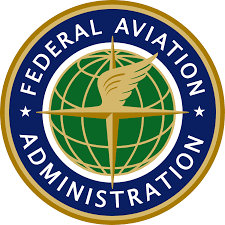Staying Safe in the Wire Environment: Best Practices for Helicopter Powerline Survey Operations
Flying near powerlines is among the most challenging and hazardous environments in aviation. For helicopter crews performing powerline surveys, wire safety is not just a checklist item — it’s a life-or-death discipline that demands constant vigilance, training, and teamwork.
Understanding the Hazard
Powerlines are difficult to see, even for experienced pilots. Sun glare, background clutter, vegetation, and poor weather can obscure wires until it’s too late. Many accidents have occurred in clear weather and familiar territory, proving that visibility alone doesn’t guarantee safety.
Helicopter survey operations often require low-level flight, extended exposure near energized lines, and frequent turns or altitude changes — all of which increase risk. Understanding the unique hazards of the wire environment is the first step toward avoiding them.
Pre-Mission Planning: The First Line of Defense
Before any wire survey flight, thorough mission planning is essential. Crews should:
-
Review maps and imagery for all transmission corridors, known hazards, and nearby obstacles.
-
Identify “no-fly” zones such as substation yards or congested areas.
-
Assess environmental conditions, including sun angle, wind direction, and expected turbulence.
-
Plan communication protocols between pilot, observer, and ground teams to maintain situational awareness.
Preflight briefings should also include emergency procedures — such as loss of engine power or tail rotor failure near wires — so the crew can respond immediately if something goes wrong.
"Wire safety isn’t just about avoiding an obstacle — it’s about respecting the environment you fly in."
In-Flight Practices: Eyes Out, Minds Ahead
During flight, maintaining a disciplined scan and communication flow is critical:
-
Divide observation duties — typically, the observer focuses on line details while the pilot focuses on aircraft control and obstacle clearance.
-
Use slow, deliberate maneuvers to minimize the chance of sudden encounters with unseen wires.
-
Maintain safe offset distances — never overfly the line when possible.
-
Use sun angle to your advantage; changing the viewing angle can make wires stand out against the background.
-
Avoid distractions — task saturation or attention drift is one of the biggest threats during survey operations.
When operating near distribution lines, note that neutral or communication lines may be thinner and harder to see than main conductors, yet pose the same risk.
Technology as a Safety Enhancer
Modern technology is helping crews detect and mitigate wire hazards:
-
Wire strike protection systems (WSPS) can prevent catastrophic damage if contact occurs.
-
Moving-map displays and LiDAR-based obstacle databases enhance situational awareness.
-
High-visibility marking of known hazard areas can help both flight and ground personnel.
However, no technology replaces training and crew coordination. The human element remains the most effective defense.
Training and Culture: Safety Starts with Mindset
Wire safety should be a core part of company culture. Regular training in wire avoidance, crew resource management (CRM), and scenario-based simulations keeps skills sharp and awareness high. Crews should feel empowered to speak up and halt operations if conditions become unsafe.
Leaders must reinforce that production never outweighs safety. Every mission should begin and end with a focus on returning home safely.
Conclusion
Helicopter powerline survey work plays an essential role in maintaining the energy infrastructure we all depend on. But it’s also a demanding and unforgiving environment. By prioritizing planning, communication, training, and technology, flight crews can minimize wire hazards and uphold the highest safety standards.
Wire safety isn’t just about avoiding an obstacle — it’s about respecting the environment you fly in.




